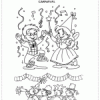
Thus, the problem was fought between two groups led by Antônio Feliciano de Castilho, writer romantic, and Antero de Quental, Teófilo Braga and Vieira de Castro, students at the University of Coimbra.
see more
Itaú Social 2022 will distribute 2 million physical and…
NGO Pró-Saber SP offers free course to educators
In October 1865, António Feliciano de Castilho referred, in the afterword letter to the youth poem, from Pinheiro Chagas, to the Coimbrã school and its lack of intelligence and ability.
In opposition, students at the University of Coimbra defended the need to modernize the Portuguese literature that, according to them, was outdated in terms of romantic, formal and academicist.
The group's objective in their creations was to realistically portray man's life and propose a renewal
In the pamphlet, Quental repudiated the traditional model of imitating and inventing nothing. In addition, he criticized those who wrote with beautiful words, but with nothing to add, as a clear allusion to Castilho.
So, two groups were formed: on the one hand, traditional writers and, on the other, modern writers. The controversy raged for a year and involved great writers and researchers from different areas, however, it caused a rupture in the way of building knowledge.
From the issue of Coimbrã, the entire class of Portuguese thinkers were encouraged to rethink tradition and create new knowledge, initiating the realism, a movement greater than romanticism itself.
Therefore, names like Eça de Queiroz and Antero de Quental were launched as great representatives of the realism Portuguese.
Read too:


